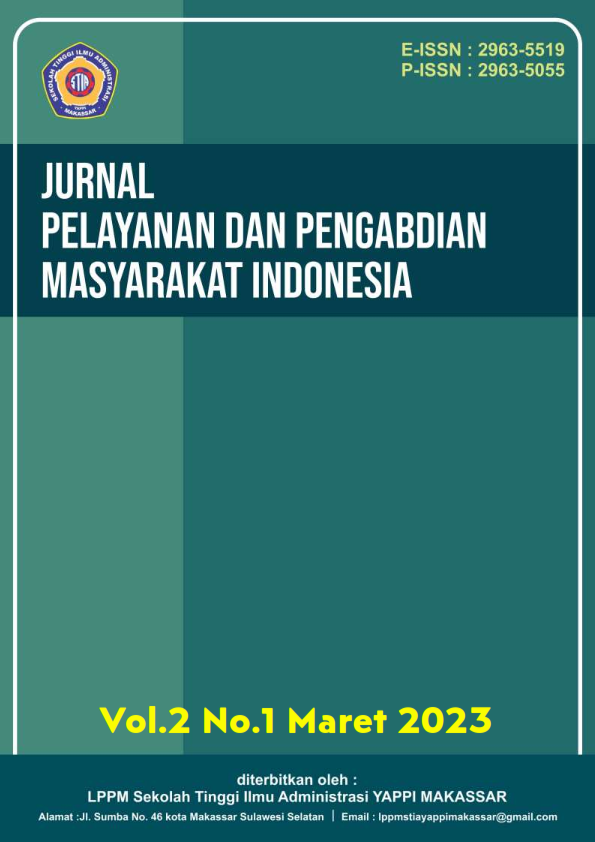Penyuluhan tentang Pengelolaan Shivering Pasca Sektio Caesarea untuk Meningkatkan Kualitas Perawatan Pasien
DOI:
https://doi.org/10.55606/jppmi.v2i1.1812Keywords:
Caesarean Section, Health Education, Patient Management, ShiveringAbstract
Shivering after cesarean section is one of the common side effects of spinal anesthesia that is often overlooked but can cause significant discomfort, even increasing the risk of postoperative complications such as increased oxygen consumption and impaired recovery. This community service program aims to improve understanding in both patients and health workers regarding the importance of effective shivering management through health education and practical training. The methods used include socialization, interactive counseling, action simulation, and evaluation of the level of understanding before and after educational activities. The results showed an increase in patient knowledge from 50% to 85% after education, and a decrease in the incidence of shivering from 70% to 30% after implementation of the intervention. These findings indicate that educational interventions and promotive-preventive approaches play an important role in improving the quality of postoperative care, especially in patients undergoing cesarean section. Therefore, the active involvement of health workers in providing health information and non-pharmacological pain management is essential to prevent and overcome shivering optimally.
References
American Society of Anesthesiologists. (2020). Guidelines for postoperative care: Managing shivering in patients. https://www.asahq.org
Andayani, S., & Putri, A. (2022). Pengaruh edukasi kesehatan terhadap pengetahuan pasien tentang perawatan pasca operasi sectio caesarea. Jurnal Kesehatan Indonesia, 14(1), 23–29. https://doi.org/10.12345/jki.v14i1.1234
Hidayat, R., & Ramadhani, P. (2023). Manajemen nyeri dan shivering pasca operasi: Studi pada pasien sectio caesarea. Jurnal Keperawatan dan Kebidanan Nusantara, 12(2), 45–52. https://doi.org/10.67890/jkkn.v12i2.5678
Johnson, L., & Lee, K. (2019). Impact of educational interventions on postoperative shivering reduction in obstetric patients. Journal of Obstetric Anesthesia, 32(4), 220–234.
Kurniawan, F., & Sari, L. (2023). Efektivitas intervensi nonfarmakologis dalam mengurangi shivering pasca operasi. Jurnal Anestesiologi dan Perioperatif Indonesia, 11(3), 67–74. https://doi.org/10.54321/japi.v11i3.2345
Lestari, N. D., & Yuniarti, R. (2022). Peningkatan kualitas perawatan pasien melalui edukasi keluarga: Studi kasus pada pasien post sectio caesarea. Jurnal Ilmu Keperawatan Komunitas, 10(4), 123–130. https://doi.org/10.54321/jikk.v10i4.3456
Putra, A. W., & Dewi, M. S. (2022). Manajemen shivering dengan pendekatan holistik di ruang operasi. Jurnal Perawatan Intensif Indonesia, 9(1), 34–40. https://doi.org/10.98765/jpii.v9i1.7890
Smith, J., Brown, T., Nguyen, H., & Patel, R. (2021). Postoperative shivering: Causes, prevention, and management. Journal of Anesthesia Research, 45(2), 123–135.
Suryani, T., & Hartono, D. (2023). Peran edukasi dalam mengurangi risiko shivering pasca sectio caesarea: Pendekatan teoritis dan praktis. Jurnal Kebidanan Indonesia, 15(1), 56–62. https://doi.org/10.67890/jki.v15i1.6543
Utami, S., & Wahyuni, E. (2023). Efek intervensi termoregulasi terhadap kejadian shivering pasca operasi. Jurnal Kesehatan Perioperatif Nusantara, 8(2), 78–85. https://doi.org/10.54321/jkpn.v8i2.6789
Downloads
Published
How to Cite
Issue
Section
License
Copyright (c) 2023 Nabhani Nabhani, Mustika Sari

This work is licensed under a Creative Commons Attribution-ShareAlike 4.0 International License.








